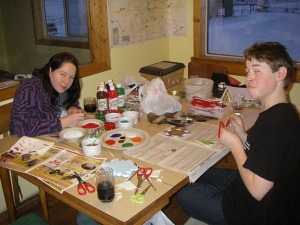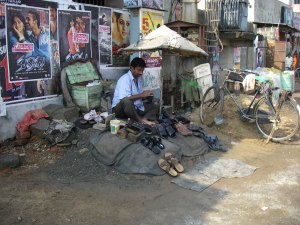
Well, I took a week off of writing over Xmas because it was so busy! Now, I feel guilty because I have not missed a week since I started this blog thing, so here is a quickie. They say a picture's worth a thousand words. I hope so!
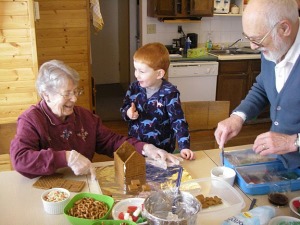
We had the annual Gingerbread construction challenge. This year there were 4 generations working at the table together--pretty cool when you think about it. Grandpa David and Grandma Margaret helped my grandson. It was great to see experience meet enthusiasm!
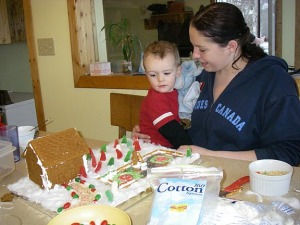
My youngest son and daughter each tackled their own houses and yards. This year, it seems that the yards got all the attention. (Perhaps that is my influence, switching as I did, to the school of Horticulture?) Two very different themes came out in the houses this year: a curling rink complete with broom-pushing curler and a farm scene with the first ever Christmas llama. My grandson did not want to be left out, so he added a Christmas pig the the chimney of his house. Oh, to be 4 again!

Christmas morning was supposed to start later this year since there were only teenagers and old people in the house, but by 4:20 I was wide awake. By 6:30 the Christmas braid was in the oven, and the kids were awake and ready to go.

Wrappings flew, smiles radiated, and the plastic package opener was put to good use. After some phone calls and a Skype or two, we packed up to go to Jenni and Gareth's for Christmas dinner.
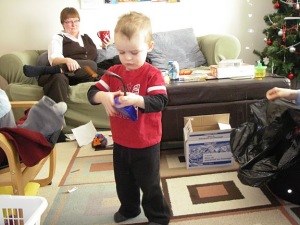
The grandkids were in full Christmas-mode with toys and paper everywhere--just like it should be. No meltdowns and lots of smiles. A bit of fighting over whose car was whose but very good behaviour for all the chaos Christmas morning brings.

Gareth cooked the meal, and we all ate way too much--again, as it should be. More visiting, eating, and playing with the grandkids followed dinner, then it was home to digest and get some much-needed sleep.
I am training my family and friends well. I am happy to tell you that on Christmas day alone, I received 4 donations for students in India! This brings the total sponsored-student count from my family and friends to 10 just for Christmas! Thank you so much! Merry Christmas to all! And Happy New Year!
For the complete set of Christmas 2009 photos, click on this link.



